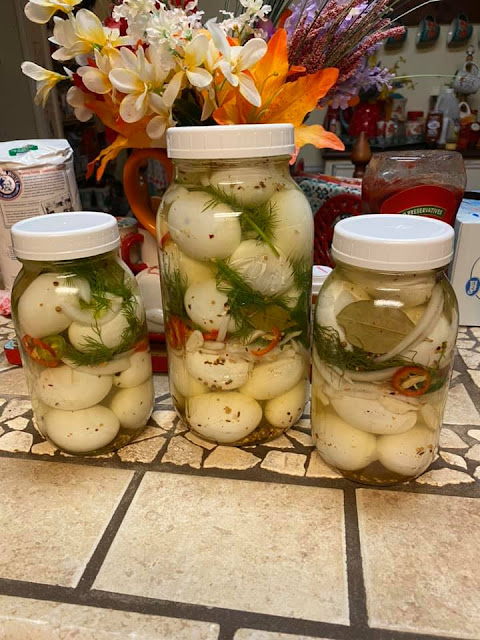Eggs for Every Occasion: The Art of Dehydrating and Reconstituting for Long-Term Storage
Eggs are a staple in many kitchens, but their short shelf life can sometimes pose a challenge when it comes to long-term food storage.
However, with the process of dehydrating eggs, you can transform them into a convenient and shelf-stable ingredient that can be stored for extended periods. In this article, we will explore the art of dehydrating eggs, providing you with step-by-step instructions and a simple reconstitution ratio. Join us as we dive into this preservation method and discover how to convert 6 dozen eggs into a compact jar of egg powder that will remain fresh and ready for culinary adventures.
Recipe: Homemade Hamburger Helper: Elevating Convenience with Delicious DIY Recipes
Recipe: Reconstituted Eggs from Dehydrated Egg Powder
Ingredients:
- - 1 tablespoon egg powder
- - 1 to 1 1/2 tablespoons water
Related: Bountiful Cranberries: Preserving the Harvest with Delicious Cranberry Jars
Instructions:
1. Dehydrating the Eggs:
- Crack and whisk the eggs in a large bowl until well combined.
- Pour the beaten eggs onto dehydrator trays lined with non-stick sheets or parchment paper, spreading them out into a thin layer.
- Follow the manufacturer's instructions for your specific dehydrator model, setting the temperature to approximately 135°F (57°C) for egg dehydration.
- Dehydrate the eggs for the recommended time, which may vary depending on your dehydrator. It typically takes around 8 to 10 hours to fully dehydrate eggs. Check for dryness by ensuring that the eggs are brittle and easily crumbled.
Related: Homemade Blueberry Muffin Mix in a Jar: Easy and Delicious Breakfast Delights
2. Grinding the Dehydrated Eggs:
- Once the eggs have cooled completely, transfer them to a blender or food processor.
- Pulse the dehydrated eggs until they turn into a fine powder.
3. Storing the Egg Powder:
- Prepare clean and dry Mason jars for storage.
- Transfer the egg powder into the jars, leaving a bit of headspace.
- Add an oxygen absorber to each jar to help maintain freshness and prevent spoilage.
- Seal the jars tightly using a food saver jar attachment or other suitable sealing method.
- Label the jars with the content and date of preservation for easy identification.
Related: Homemade Caramel Coffee Creamer: Indulgent Bliss in Every Sip
4. Reconstituting the Eggs:
- In a small bowl, combine 1 tablespoon of egg powder with 1 to 1 1/2 tablespoons of water, depending on the desired consistency.
- Stir the mixture until the powder is fully dissolved and the consistency resembles beaten eggs.
- Allow the mixture to sit for a few minutes to thicken slightly.
5. Using the Reconstituted Eggs:
- Treat the reconstituted eggs as you would fresh eggs in recipes.
- Use them in omelets, scrambled eggs, batters, or any other dishes that call for eggs.
- Adjust the amount of water and egg powder as needed to achieve the desired consistency and flavor.
Dehydrating eggs is a smart and efficient way to extend their shelf life and ensure that you have a reliable source of this versatile ingredient at your fingertips.
By following the simple steps of dehydration, grinding, and storing, you can transform 6 dozen eggs into a compact jar of egg powder that will remain fresh and usable for months or even years. Reconstituting the egg powder is a breeze, allowing you to enjoy the convenience of using eggs in various recipes without worrying about spoilage. So, embrace the power of dehydration, stock up on dehydrated eggs, and unlock a world of culinary possibilities even in the face of limited egg availability.

























Comments